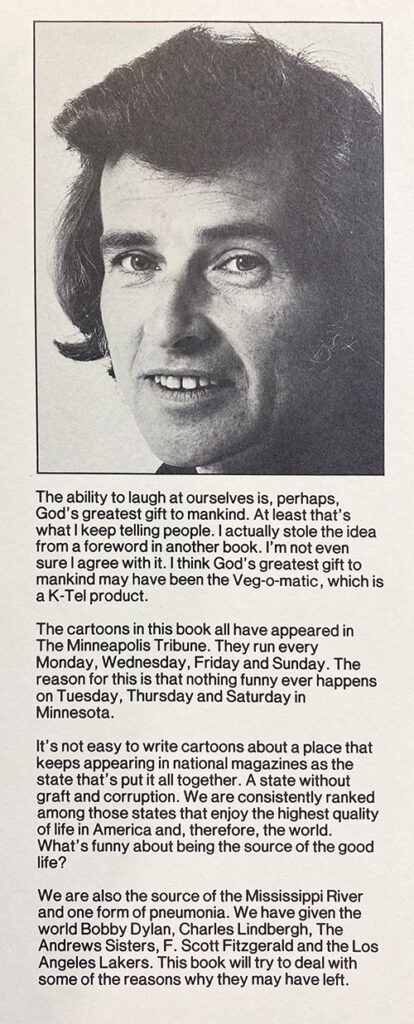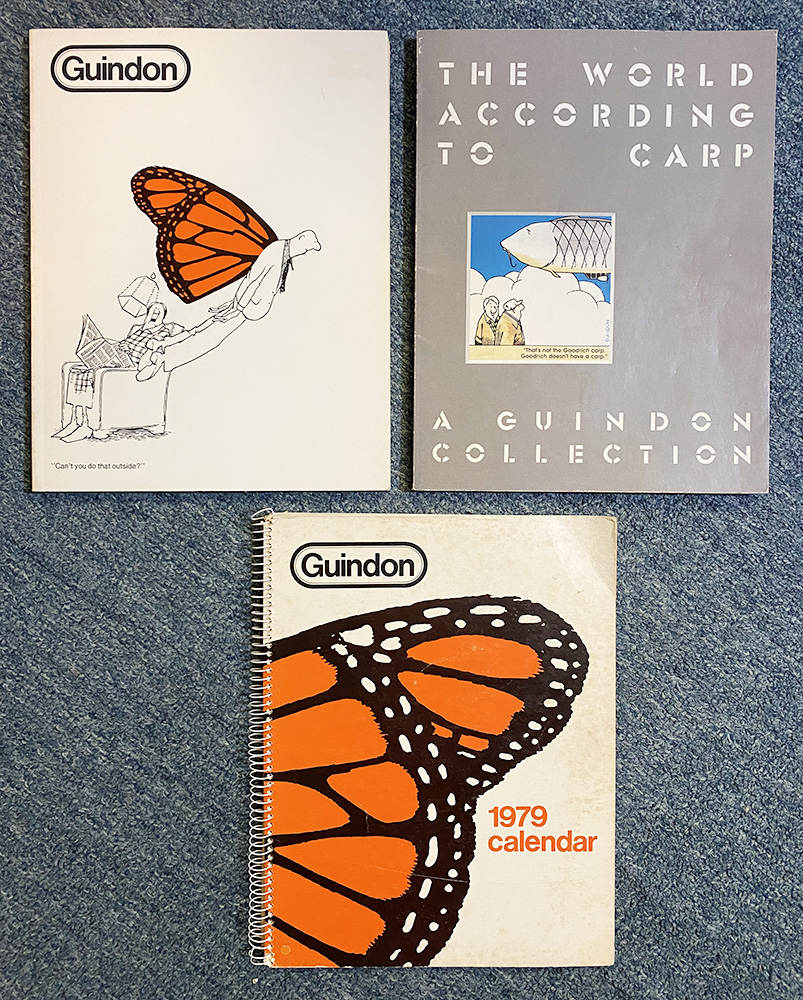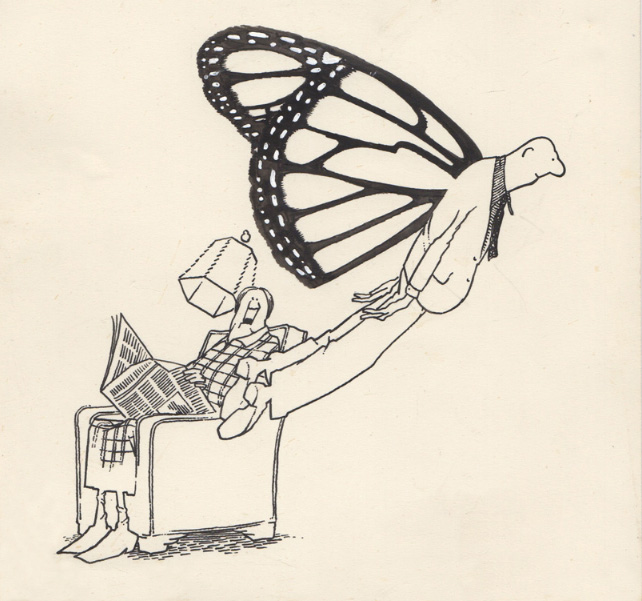Copy that went with the photo shown above:
“Dick Guindon’s first cartoons, dealing with a character called Hugger Mugger, were published in the Minnesota Daily. Hugger Mugger eventually was syndicated and appeared in 100 college newspapers. Guindon then went to New York, where, as a freelance cartoonist, he sold his work to Downbeat, Playboy, Esquire and New York Magazine. The Realist sent him abroad for a year as a kind of cartoonist-correspondent in Greece, Turkey, Egypt, Jordan and Israel. Guindon was born December 2, 1935, in St. Paul. He began cartooning when he finished three years in the army, and he joined the Minneapolis Tribune in 1968.”
Guindon in his own words from the foreword…
I grew up on Guindon – he was one of my favorites. His cartoons nailed the archetypal Minnesotan in a way that no one else has come close. The caricatures in the Coen brothers movie Fargo are the popular stereotype, but Guindon went more to the core.
In 1981 Guindon moved from Minneapolis to Detroit. YouTube has the following time capsule of the event. There are quick cameos of a young Louie Anderson and Garrison Keillor among others…
And here’s an interview with Guindon in Detroit.
Tragedy struck in April 1987 when the studio Guindon had in a historic four-story building in Traverse City, Michigan was destroyed by fire. More than 5,000 cartoons and sketches burned.
In February 2005 Patty Stearns interviewed Guindon for Traverse Magazine. Here’s some excerpts…
Gaze over to the floor-to-ceiling bookcases in
Guindon’s living/dining room and scan the titles: The
Catcher in the Rye, Marcella’s Italian Kitchen, Salt: A
World History, The Lies of George W. Bush. There’s an
entire section devoted to the works of novelist Elmore
“Dutch” Leonard, whose late wife, Carol, brought back
one of Guindon’s prized espresso pots from a trip to
Europe. A case of the cartoonist’s favorite wine,
Côtes du Rhône, fills another couple of shelves.
Next to that stands a three-quarter-sized rendition
of the artist himself—a painted board with a cutout
for a wristwatch, which is missing. Guindon calls
it his “Grandfather Clock,” although he is not yet
a grandfather.
Guindon has produced cartoons that are part of the Smithsonian
Institution’s Archives of American Art and The Ohio
State University Cartoon Research Library. He has authored
six books, and collectors sell pieces of his life from galleries and
over the Internet for big bucks.
None of this has gone to his head.
Guindon has never socialized much with his fellow cartoonists.
“I find them a little bit sad, frankly,” he says. “They
tend to work on kitchen tables and not think of themselves
very professionally and that sort of thing.” He gets a smirk on
his face.
You never really know when he’s kidding.
“Everyone who’s ever been around me is always surprised by
how much goes into it, because you always think, well, they’re
just potato heads,” Guindon says.
But screenwriter Kurt Luedtke, a friend and former executive
editor of the Free Press, has seen this artist in action.
“The truth about Guindon is that he draws unusually well; a
lot of folks miss that, I think, perceiving him as a very funny
guy with an offbeat sense of humor who’s a cartoonist. Study
those panels for a while and you realize that his oblique take
on life is just the beginning of a process that really ends with
a masterful pen.”
According to Wikipedia, Guindon announced his retirement the same year as the preceding interview – 2005.
The Detroit Free Press reported that Richard Gordon Guindon, 86, died the evening of Feb. 27, 2022 in Northport, Michigan, after a long illness with his son at his side.

You can check out more of Guindon’s work at
The Billy Ireland Cartoon Library & Museum Blog.








